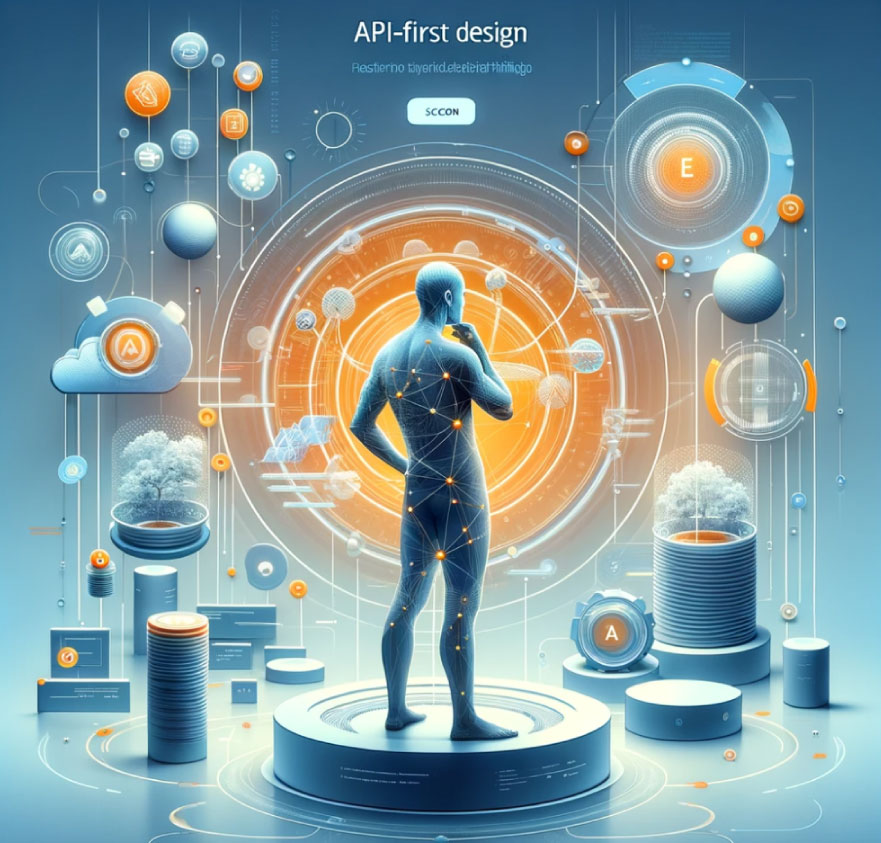API-First Design: Strategies for Modern Development

In the rapidly evolving digital landscape, API-First Design emerges as a beacon for forward-thinking development strategies. This approach, placing APIs at the heart of the development process, not only streamlines integration across diverse systems but also paves the way for more scalable, flexible, and robust software solutions. In this deep dive, we unravel the essence of API-First Design, its unparalleled benefits, key principles, and practical steps to implement it effectively.
What is API-First Design?
API-First Design is a methodology where the creation and definition of APIs take precedence in the development cycle. Unlike traditional models, where APIs were secondary, this strategy advocates for APIs as the foundational layer upon which applications are built. By focusing on APIs from the get-go, businesses can ensure their digital services are more adaptable, easier to integrate with, and primed for future technological advancements.

The strategic advantages of API-First Design
Adopting an API-First Design philosophy brings several competitive advantages:
Enhanced integration: Seamless connectivity between various systems and services becomes the norm, facilitating a more cohesive digital ecosystem.
Scalability and flexibility: APIs allow for the modular development of applications, making it easier to scale and adapt to new requirements without overhauling the entire system.
Speed to market: With APIs defined upfront, parallel development processes can accelerate, leading to quicker releases and updates.
User-centric focus: Prioritizing API development encourages a user-centric approach, considering the end-user experience from the outset.
Key principles of API-First Design
To successfully adopt API-First Design, it’s essential to understand and apply its core principles:
1. Start with a clear API strategy: Before any coding begins, outline a comprehensive plan detailing the purpose, scope, and functionalities of your APIs.
2. Design for the end user: Consider the developers and end-users of your APIs as your primary customers. Ensure your API is intuitive, well-documented, and easy to use.
3. Adopt a standardized approach: Utilize industry standards like REST for API design and OpenAPI for documentation to ensure consistency and interoperability.
4. Iterate based on feedback: APIs should evolve through iterative development, incorporating feedback from users to refine and improve their design and functionality.
5. Incorporate security measures early: Address security concerns from the outset by integrating authentication, authorization, and encryption into your API design.

Implementing API-First Design: Best practices
Embracing API-First Design requires a thoughtful approach and adherence to best practices:
- Begin with a blueprint: Use API design tools to create a detailed blueprint of your API, outlining its structure and key functionalities before development starts.
- Ensure comprehensive documentation: Provide clear and thorough documentation to support developers in integrating with your API effectively.
- Prioritize security and compliance: Build your API with security in mind from the start, adhering to data protection regulations and best practices.
- Foster a feedback-oriented culture: Encourage continuous feedback from internal and external API consumers to guide future iterations and improvements.
Navigating Challenges in API-First Design
While API-First Design heralds numerous benefits, it’s not without challenges. Key among these is the need for a cultural shift within organizations to prioritize API development and the requirement for robust planning and documentation. Overcoming these hurdles involves comprehensive training, adopting the right tools, and fostering an environment that values continuous improvement and collaboration.
Conclusion: Centizen and the future of API-First Design
Embracing API-First Design is crucial for innovation and efficiency in today’s digital landscape. At Centizen, this approach is central to delivering custom software solutions and our SaaS products, ZenBasket and Zenyo, which redefine ecommerce and workforce management through seamless integration and scalability. By championing API-First Design, we not only streamline remote hiring from India but also ensure our platforms meet the evolving needs of businesses globally. Join us in leveraging API-First Design to drive success in the digital era.
Centizen
A Leading IT Staffing, Custom Software and SaaS Product Development company founded in 2003. We offer a wide range of scalable, innovative IT Staffing and Software Development Solutions.
Contact Us
USA: +1 (971) 420-1700
Canada: +1 (971) 420-1700
India: +91 63807-80156
Email: contact@centizen.com
Our Services
Products
Contact Us
USA: +1 (971) 420-1700
Canada: +1 (971) 420-1700
India: +91 63807-80156
Email: contact@centizen.com






